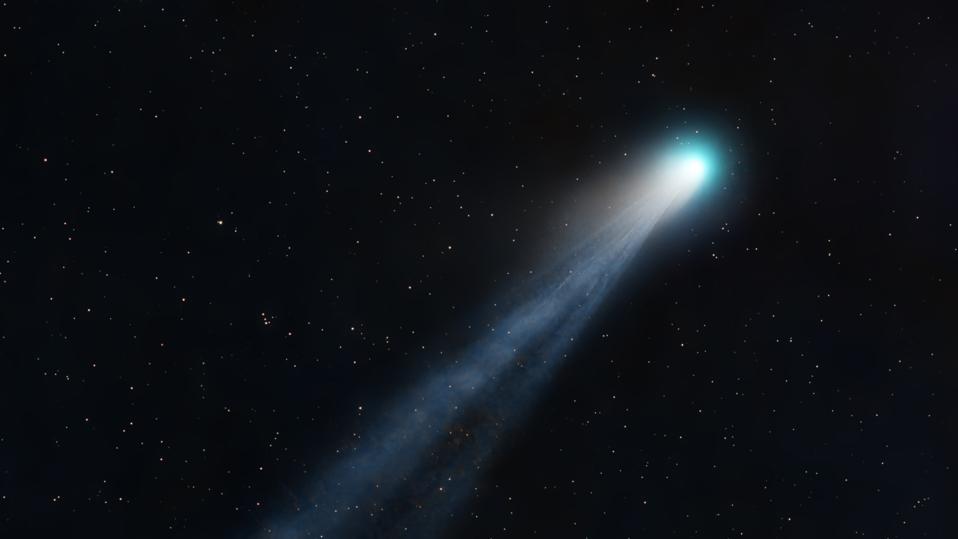Comet Lemmon will be visible during October 2025 during the Orionid and Taurid meteor showers, creating a month of potential comets, “shooting stars” and fireballs. (2024’s Comet 12P/Pons-Brooks is pictured).
getty
October 2025 has the potential to be a dazzling month for skywatchers. Not only does it see the onset of fast-moving “shooting stars” from the Orionid meteor shower, but it’s also set to see “fireballs” during a special swarm year for the Taurid meteor shower. However, the celestial icing on the cake could be a bright comet — Lemmon (C/2025 A6) — a once-in-a-lifetime green comet that could even reach naked eye visibility.
Orionid Meteor Shower
Active from Oct. 2 to Nov. 7, the Orionid meteor shower will peak overnight on Oct. 21-22. The result of debris left by Halley’s Comet and are known for their speed, Orionids often leave beautiful glowing trails in the night sky.
With a new moon coinciding with this year’s peak, conditions should be excellent — clear skies allowing — with around 20 meteors per hour expected.
A ‘Taurid Swarm’ Year?
The Taurids are where “fireballs” — very bright “shooting stars” — come from. Split into two branches, the Southern Taurids and Northern Taurids, unlike most meteor showers, they’re active for many weeks and overlap in activity. According to the American Meteor Society, the Southern Taurids run from Oct. 13 through Nov. 27 this year.
The show begins with a surge of slow-moving meteors around Oct. 14, followed by a surge in fireballs as bright as Venus. That will happen around Nov. 3–4 and, since this is a swarm year, according to the American Meteor Society, it could be seriously impressive, particularly as rates are topped-up by the Northern Taurids, which reach their maximum on Nov. 8-9.
The radiant of both showers is the constellation Taurus, near the bright Pleiades star cluster, making them easy to identify during the nights around Halloween.
Comet Lemmon: What To Know
As the Taurids ramp up and the Orionids peak, Comet Lemmon (C/2025 A6) will likely provide a third spectacle. Discovered in January 2025 by the Mount Lemmon Survey in Arizona, this comet last visited the inner solar system in the seventh century and will not return until the year 3421.
By mid-October, the comet will be close to the Big Dipper, glowing green as it brightens. Its closest approach to Earth comes on Oct. 21, coinciding perfectly with the Orionids peak and a new moon. For northern observers, the comet will be circumpolar, meaning it will be visible both in the evening and morning sky.
Will Comet Lemmon be visible to the naked eye in dark skies? That remains to be seen, but it should be easy to spot with binoculars. Since October is a great month for the Northern Lights, there’s even the prospect of a lingering comet, fast-moving fireballs and aurora in the same sky.
What’s Next In The Night Sky: Meteor Showers
After October’s fireworks, meteor showers keep coming. The Leonids arrive first, peaking on the night of Nov. 16-17 with around 15 swift meteors per hour with the moon just 9%-lit. Next come the Geminids, often called the most spectacular shower of the year, peaking on Dec. 13-14 with up to 150 colorful meteors per hour, again in moonless night skies. Just a week later, the Ursids peak in dark skies.
Wishing you clear skies and wide eyes.
Source link



